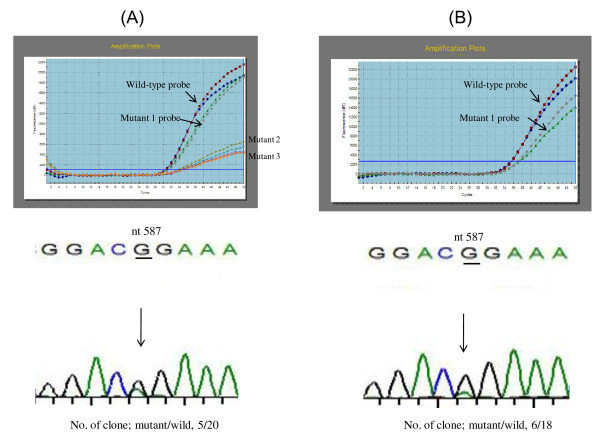Figure 2.
Serum HBV DNA from a girl who became positive for HBsAg and negative for anti-HBs despite immunoprophylaxis was amplified by mutant-specific real-time PCR in duplicate. (A) Before antiviral therapy (May 2007), the Ct values of the amplification plots in the mutant 1 probe were the same as those for the wild-type probe. In addition, the amplification plots of both probes were similar in the upward slopes. Although the signals of the mutant 2 and 3 probes were detectable, the curves of the amplification plots were not steep. There was an overlapped peak at nt 587 in the electropherogram. The larger peak was G, and the smaller peak was A. Of the 20 clones, 5 had a mutation at nt 587 from G to A. (B) At the cessation of antiviral therapy (May 2009), the girl was negative for serum HBV DNA by real-time PCR. 4 months after the completion of antiviral therapy, however, she became positive again for serum HBV DNA. The signals of the mutant 1 probe as well as the wild-type probe were detected in the amplification plots (the mutant 2 and 3 probes were not used). The curves of the amplification plots were steep. There was an overlapped peak at nt 587 in the electropherogram. Of the 18 clones, six had a mutation at nt 587 from G to A.

